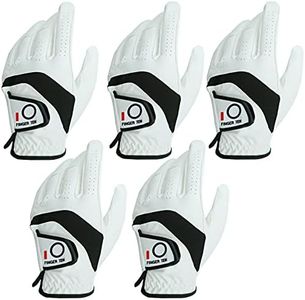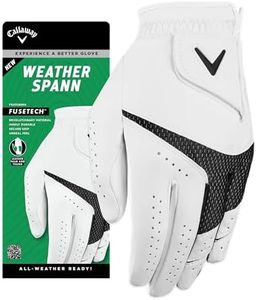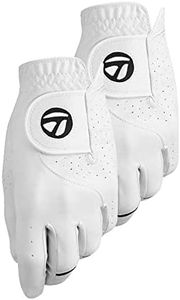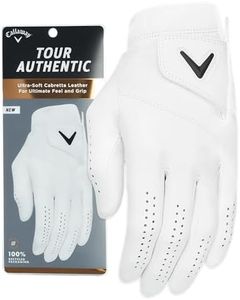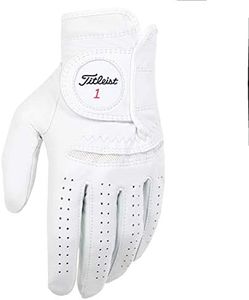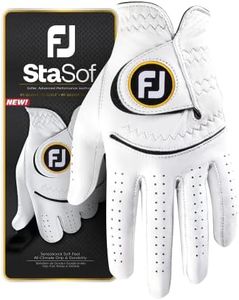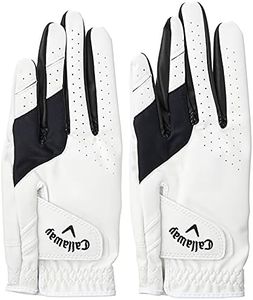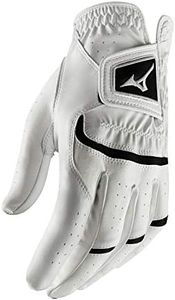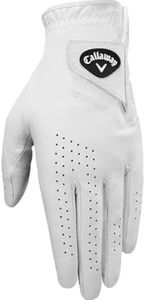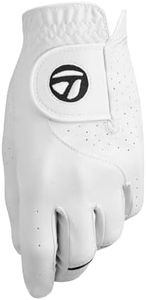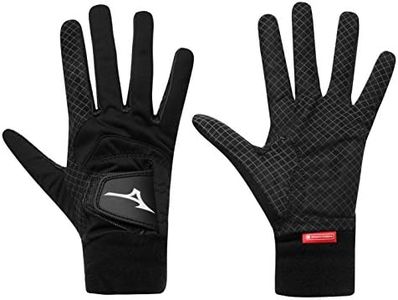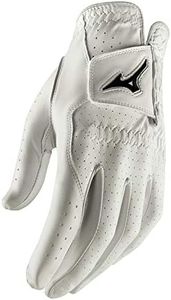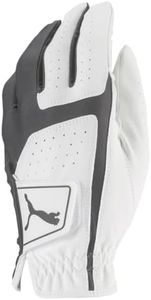We Use CookiesWe use cookies to enhance the security, performance,
functionality and for analytical and promotional activities. By continuing to browse this site you
are agreeing to our privacy policy
10 Best Mens Golf Gloves
From leading brands and best sellers available on the web.Buying Guide for the Best Mens Golf Gloves
Choosing the right men's golf glove can make a significant difference in your comfort, grip, and performance on the course. A good glove should fit your hand snugly without being too tight, allow for natural movement, and provide a secure grip in all weather conditions. Thinking about your playing frequency, local climate, and personal preferences will help narrow down the options to what will actually work best for you.MaterialGolf gloves are usually made from leather, synthetic materials, or a blend of both. Leather offers a soft, natural feel and excellent grip, which is great for control and touch, but may wear out and stretch faster, especially if you play often or in wet conditions. Synthetics focus on durability, flexibility, and can wick away moisture, making them better for sweaty hands or rainy days, though they might not feel as premium. Blended gloves combine benefits of both and try to strike a balance. If you play in dry conditions and want the best feel, consider leather; for frequent or wet play, look into synthetic or hybrid options.
Fit and SizeFit refers to how the glove contours to your hand while size is about the basic measurement around your palm and fingers. A proper fit ensures you have good contact with the club and prevents blisters or discomfort. Gloves come in regular and cadet sizes (the latter has slightly shorter fingers and a wider palm), and should be snug but not constrictive. When trying on, look for a glove that fits like a 'second skin'—fingers shouldn’t have extra material at the tips or bunching on the palm. Picking the right fit reduces slipping and enhances your swing.
Grip and TextureThe palm and finger surfaces of a golf glove are designed to enhance your grip on the club. Some have extra textured or tacky zones, while others rely on the natural qualities of leather. Better grip is ideal in wet or humid conditions, or if your hands sweat. For dry, controlled environments, standard leather can suffice. If you struggle with club slippage, prioritize gloves with reinforced or textured palms.
Breathability and VentilationBreathability is how well the glove lets air in, keeping your hand cool and minimizing moisture. Features like perforations on the fingers and mesh panels improve airflow. High breathability is important if you play in hot weather or have sweaty hands. If comfort through long rounds is a concern or you’re in a warm climate, look for gloves labeled as breathable or ventilated.
Closure TypeMost golf gloves use a Velcro (hook-and-loop) closure on the back of the hand for adjustability, while some have snap-closures. Velcro provides easy on/off and fit adjustments. Check that the closure aligns comfortably across your hand and makes it easy to customize fit without digging into your skin. If you want the most adjustability, Velcro is generally preferred.
DurabilityDurability refers to how well your glove stands up to regular use. Leather often feels best but can wear more quickly, especially when exposed to rain or sweat. Synthetic and hybrid gloves last longer, especially if you play frequently or tend to be tough on equipment. If you play only occasionally, you might prefer ultimate comfort. For frequent or hard play, prioritize gloves known for durability.
Weather AdaptabilitySome gloves are designed especially for rain, cold, or heat. Rain gloves remain tacky when wet, cold-weather gloves have added insulation, and hot-weather gloves prioritize lightweight materials and ventilation. If you play year-round or in varying climates, consider specialty gloves for certain conditions to maximize grip and comfort on every outing.
